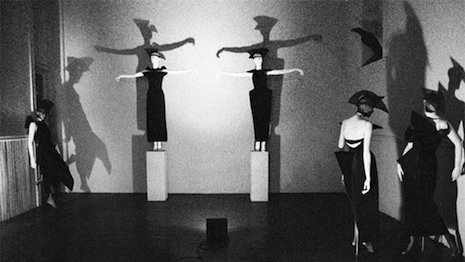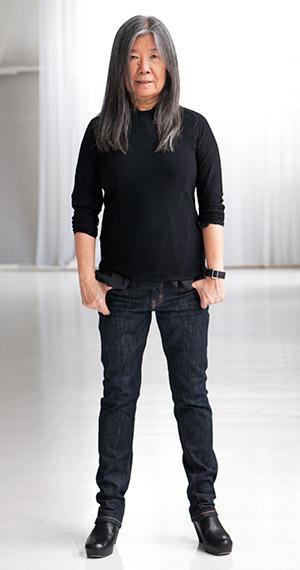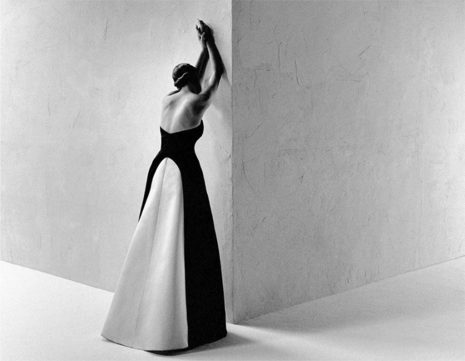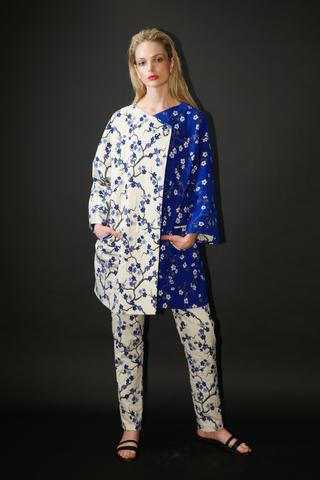 Silhouettes of Yeohlee's work, seen in the exhibition “Fashion: Yeohlee Teng” at PS 1 in 1984. Image credit: Yeohlee, photo by Yeohlee Teng
Silhouettes of Yeohlee's work, seen in the exhibition “Fashion: Yeohlee Teng” at PS 1 in 1984. Image credit: Yeohlee, photo by Yeohlee Teng
Yeohlee Teng, founder of Yeohlee Inc., in this interview describes what makes the clothes she designs magical. Her 36-year-old label is styled as “Independent fashion from the heart of New York City.”
Originally from Malaysia, Ms. Teng is of Malaysian-Chinese heritage. She studied at the Parsons School of Design The New School. She is based in New York.
Ms. Teng established her eponymous house in 1981. She is the recipient of the Smithsonian’s Cooper-Hewitt National Design Award for Fashion. Her work and designs are part of the permanent collection of the Costume Institute at New York's Metropolitan Museum of Art, where the late Richard Martin, then chief curator, called her "one of the most ingenious makers of clothing today."
 Standing tall: Fashion designer Yeohlee Teng. Photo by Sophie Elgort
Standing tall: Fashion designer Yeohlee Teng. Photo by Sophie Elgort
The designer dresses the "urban nomad," a term she coined in her fall 1997 collection, defining a lifestyle that requires clothing that works on a variety of practical and psychological levels. She is a master of design management and believes in the efficiency of year-round, “seasonless” clothes for Yeohlee.
Please read the entire interview:
When did your journey into the world of design begin?
My brothers and their friends were all architects. We had this big sketch book in our house that everybody drew in, so I grew up drawing.
I was the school artist and designed all the costumes for our school plays and painted the murals there. I remember working on a mural with my best friend that was the length of the basketball court – my first lesson in scale.
If you go back to the times of Cleopatra or the ancient Greeks and Romans, clothing was always making a statement. In your book you say that “clothes have magic.” What do you mean by that?
The complete quote was “Clothes have magic. Their geometry forms shapes that can lend a wearer power.” (Hayden Gallery, MIT, 1982, from the exhibition catalog, Intimate Architecture: Contemporary Clothing Design.)
Going back in time, robes and voluminous headdresses were always profoundly understood by tribal chiefs as well as the Catholic Church to be powerful.
I am aware of how much authority can be communicated through what one chooses to wear.
The same quote that I gave at MIT in 1982 is in my book, Yeohlee : Work 2003.
The exhibition, Intimate Architecture: Contemporary Clothing Design, held at MIT’s Hayden Gallery, was a pivotal show that put women's fashion/clothing into the context of the design world.
Up until then it was women's fashion in magazines and in store windows, but this was a serious exhibition and it was about clothing as armor.
We were not trying to elevate our discipline by reference. Intimate Architecture was about a tortoise in its shell.
It's not about the built environment that architects create. We create intimate architecture because it's the first shelter that you build around yourself.
 An image of a spring 1995 Yeohlee gown from the 2003 book, Yeohlee : Work. Image courtesy of Alan Crespo
An image of a spring 1995 Yeohlee gown from the 2003 book, Yeohlee : Work. Image courtesy of Alan Crespo
What examples do you have that validate your “clothes have magic” statement?
A memorable example about clothes having magic happened with a woman who bought a coat of mine at Saks.
At the end of a talk I was giving at Yale, during the Q&A, a woman in the audience stood up and said that at the beginning of her career when she wasn't making a lot of money there was a coat designed by Yeohlee that she really wanted. She had an internal debate: “Should I buy the Yeohlee coat or pay the rent?” She went back and forth about it for a week, and then she bought the coat.
Then a week later, she was walking down the street and this guy came up to her and said “My God, you look beautiful.” She was certain that her beauty was buoyed by the coat she was wearing and she proudly said, “And we are still married today.’”
Where do you get your inspiration?
Inspiration can be serendipitous.
For instance, I was biking along the East River and stopped by the Brooklyn Bridge. I was surprised and amazed by the multitude of jellyfish swarming in the water. Presto, spring 2009, jellyfish floating through Bernard Tschumi’s Parc de la Vilette grid, creating a buoyant dialogue between the supple and the solid.
Inspiration comes from everywhere and everything – the breeze, a song, a whisper or a being.
 A look from the Yeohlee ready-to-wear spring 2018 collection. Image credit: Yeohlee, photo by Kyle Ericksen
A look from the Yeohlee ready-to-wear spring 2018 collection. Image credit: Yeohlee, photo by Kyle Ericksen
How do you stay in touch with the trends that are going on in the marketplace?
I watch and try to listen with an open mind and read as much as I can.
What advice do you have for young designers?
Watch the clock. You don't have a second to spare. Be driven. Deliver. Be a master of your own time.
 Dan Hodges is CEO of Consumers in Motion
Dan Hodges is CEO of Consumers in Motion
Daniel Hodges is CEO of Consumers in Motion Group, and founder of Fashion Week Store Tours and Retail Store Tours, New York. Reach him at dan@consumersinmotion.com.